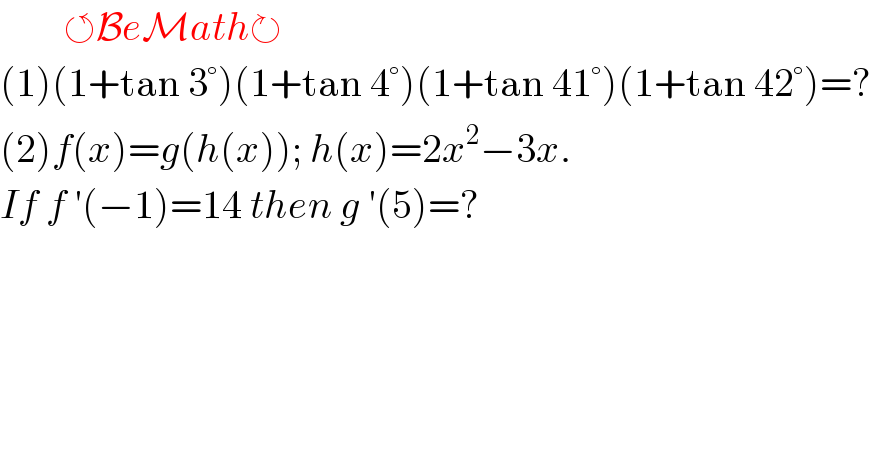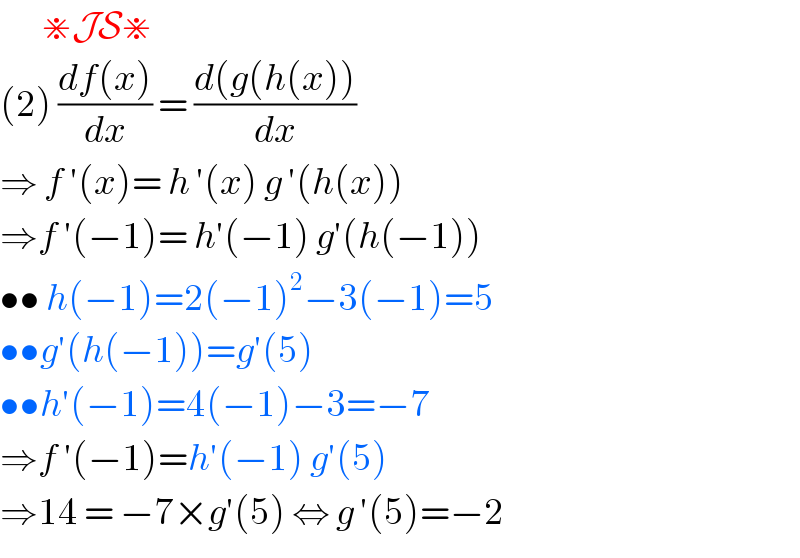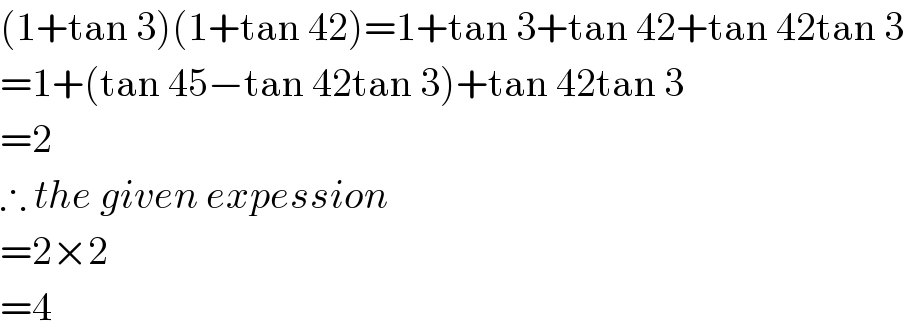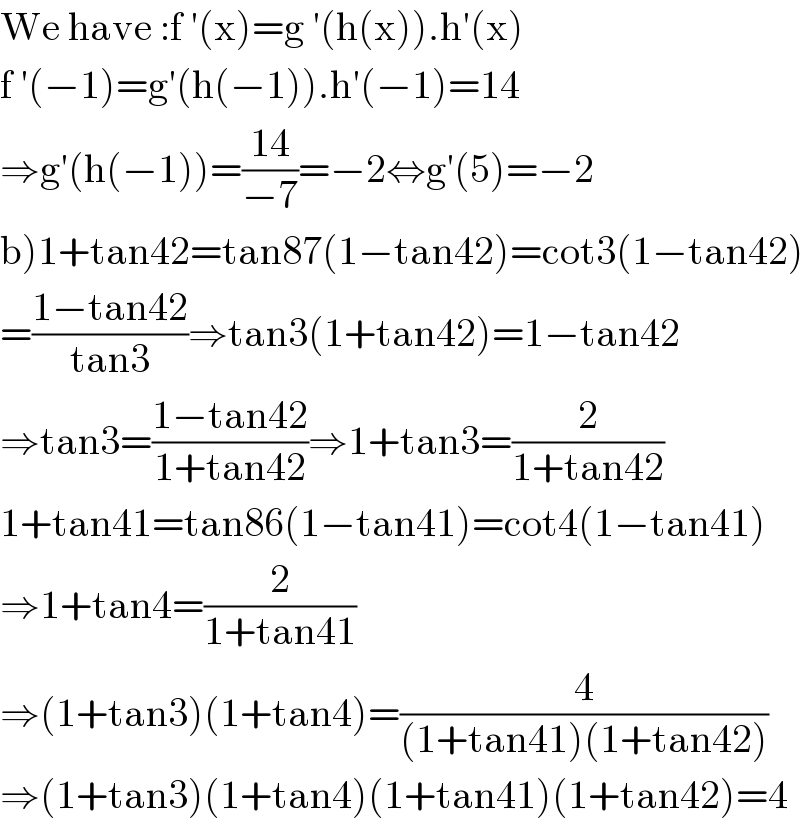
Question and Answers Forum
Question Number 107470 by bemath last updated on 11/Aug/20

Answered by john santu last updated on 11/Aug/20

Answered by $@y@m last updated on 11/Aug/20

Commented by bemath last updated on 11/Aug/20

Commented by $@y@m last updated on 11/Aug/20

Answered by 1549442205PVT last updated on 12/Aug/20

